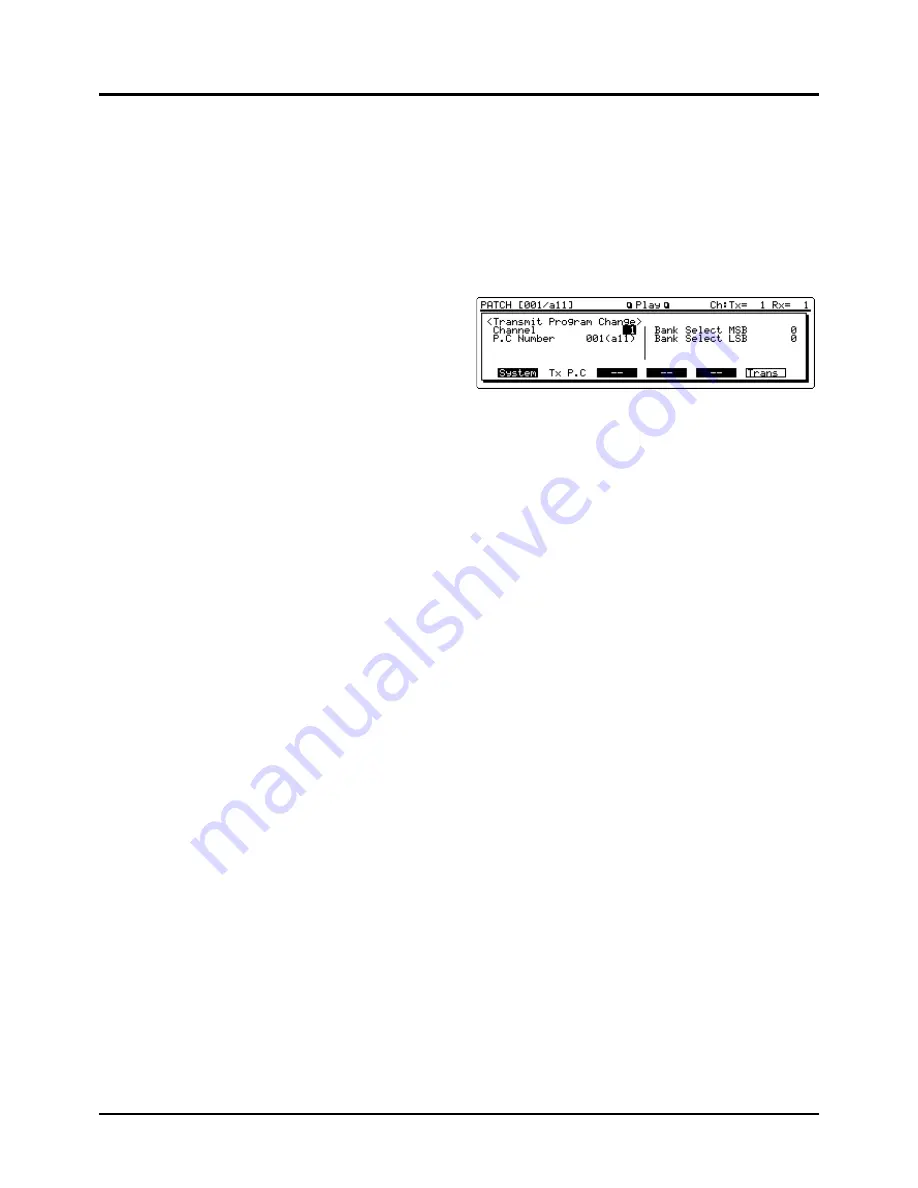
182
Avoiding sound dropouts in a song
The XP-80 can produce up to 64 voices simultaneously. But
if you request more than 64 simultaneous voices, notes
exceeding the limit will be turned off in order of priority
starting from the lowest priority note, to be able to accom-
modate the newly requested notes. You can prevent this by
using Voice Reserve to ensure a minimum number of notes
will always be available for each Part.
...........................................................................................................
<Simultaneous voices>
The XP-80 can produce up to 64 simultaneous voices. The
number 64 however does not represent simply the number
of notes being played, but is affected by the number of Tones
used in each Patch. If you are playing one Patch which uses
just one Tone with a single key press, you can produce just
one note at one time. If you play two Patches, each using
four Tones, by pressing two notes, you’re using eight simul-
taneous voices. Calculating the number of simultaneous
voices is easy using this formula: (number of currently
sounding notes) x (number of Tones used in the Patch being
played).
If you are using the XP-80 in Performance mode to play an
ensemble, count the total number of Tones used by all the
Parts.
...........................................................................................................
<Procedure>
❶
Select the Performance you want on the Play display
(PERFORM).
❷
Press [
l
] or [
r
] to select the Part for which you want
to reserve notes.
❸
Press [
d
] to call up the Play display of a Patch
assigned to the Part.
❹
Confirm the Tones used by the Patch shown below the
Patch name.
For example, a “Tone:12--” indication means two out of four
Tones are used.
❺
Press [
u
] to return to the Play display (PERFORM).
❻
Call up the Part Param display (PERFORM/Part).
❼
Set the Voice Reserve parameter to the number of
notes to be reserved.
...........................................................................................................
❚
Using external MIDI devices
Using the XP-80 to change the sound on
an external MIDI device
<Procedure>
❶
Press [LOCAL/TX/RX] to open the LOCAL/TX/RX
window.
❷
Press [F2] (Tx P.C) or [F3] (Tx P.C) to call up the
Transmit Program Change window.
❸
Set the Channel (MIDI channel), P.C Number
(Program number), Bank Select MSB, and Bank Select
LSB parameters to match the sound used by the exter-
nal MIDI device.
✳
If the Program number of the external MIDI device
reads 0–127, set the P.C Number parameter by adding
1 to the external MIDI device’s value.
❹
Press [F6] (Trans) to change the sound of the external
MIDI device.
Using the XP-80 to control external MIDI
devices
<Procedure>
❶
Connect the XP-80’s MIDI OUT to the MIDI IN of the
external MIDI device using a MIDI cable.
❷
Set the XP-80’s MIDI channel to match the external
MIDI device’s receive channel.
The MIDI channel is determined by the following parame-
ters.
Patch mode
: Patch Tx-Ch parameter (SYSTEM/MIDI/MIDI
Param 1)
Performance mode:
Channel parameter (PERFORM/MIDI/
Part MIDI), Tx Switch parameter (PERFORM/MIDI/Part
MIDI) ON
❸
If you want to play just the sound source of the exter-
nal MIDI device, set the Local Switch parameter (SYS-
TEM/MIDI/MIDI Param 1) OFF.
When you want to connect two or more external MIDI
devices, use the MIDI THRU connector of the external MIDI
devices.
✳
If you daisy-chain three or more MIDI devices using
IN
→
THRU
→
IN
→
THRU..., the MIDI signal may
become garbled and cause errors in data. Using a MIDI
Thru Box is recommended in such cases. MIDI Thru
Boxes allow a single stream of MIDI data to be sent to
a large number of MIDI devices or sound modules
without causing data errors.
Chapter 11. Getting the full potential of the XP-80
Содержание XP-60
Страница 245: ...245 ...
Страница 248: ...OWNER S MANUAL 01458056 99 7 E3 51K ...






























